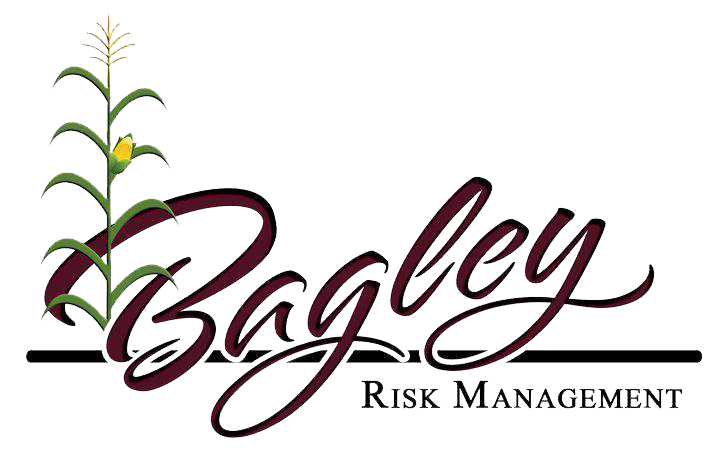10 Simple Techniques For Bagley Risk Management
Table of ContentsBagley Risk Management Fundamentals ExplainedBagley Risk Management Fundamentals ExplainedThe Best Guide To Bagley Risk ManagementWhat Does Bagley Risk Management Do?The 45-Second Trick For Bagley Risk ManagementWhat Does Bagley Risk Management Do?
When your agreement reaches its end date, the final rate is determined making use of the CME Feeder Cattle Index. This is based on sale barns throughout the Midwest (not just your local market). If the index falls below your contract's coverage price, you might be paid the difference. Price Modification Variables will use.Livestock Risk Protection (LRP) is a USDA subsidized insurance program that assists protect manufacturers from the dangers that come from market volatility. With LRP, producers are able to guarantee a floor cost for their livestock and are paid an indemnity if the market worth is less than the insured cost.
This product is intended for. Livestock insurance.
Excitement About Bagley Risk Management

In the last number of months, several of us at FVC and PCM have gotten inquiries from producers on which threat administration device, LRP vs. Futures, is much better for a pork manufacturer? Like most tools, the response depends upon your operation's goals and circumstance. For this edition of the Dr.'s Edge, we will check out the scenarios that have a tendency to prefer the LRP device.
In Mike's evaluation, he contrasted the LRP calculation versus the future's market close for every day of the previous 20 years! The portion expressed for each and every month of the provided year in the initial area of the table is the percent of days in that month in which the LRP computation is reduced than the futures close or in other words, the LRP would possibly indemnify greater than the futures market - https://lwccareers.lindsey.edu/profiles/4274773-andrew-bagley. (National livestock insurance)
As an instance, in January 2021, all the days of that month had LRP potentially paying even more than the futures market. On the other hand, in September 2021, all the days of that month had the futures market possibly paying greater than LRP (no days had LRP reduced than futures close). The tendency that reveals itself from Mike's analysis is that a SCE of a LRP has a higher probability of paying much more versus futures in the months of December to Might while the futures market has a higher likelihood of paying extra in the months of June to November.
4 Simple Techniques For Bagley Risk Management

50 or $5. 00). As an example, in 2019, LRP was far better or within a $1. 25 of the futures market over 90% of the days in all the months except June and August. Table 2 portrays the ordinary basis of the SCE LRP estimations versus the future's close for the offered period each year.
Once again, this data sustains more possibility of an SCE of a LRP being better than futures in December with May for many years. As a common caution with all evaluation, previous performance is NO guarantee of future performance! It is vital that producers have accounting methods in place so they know their price of production and can much better establish when to utilize risk management devices.
The Bagley Risk Management PDFs
Some on-farm feeders might be contemplating the need for price security right now of year on calves preserved with the intent to feed them to a surface weight at some point in 2022, making use of available feed sources. Despite solid fed livestock prices in the existing neighborhood market, feed expenses and present feeder calf values still create tight feeding margins relocating forward.
23 per cwt. The present average public auction price for 500-600 pound guides in Nebraska is $176 per cwt. This suggests a break-even cost of $127. 57 for the 1,400-pound guide in July of 2022. The June and August live cattle agreements on the CME are presently trading for $135. 58 and $134.
Cattle-feeding business tend to have tight margins, like numerous agricultural ventures, as a result of the affordable nature of the service. Cattle feeders can bid a lot more for inputs when fed livestock prices climb. https://www.twitch.tv/bagleyriskmng/about. This boosts the price for feeder livestock, specifically, and somewhat enhances the prices for feed and various other inputs
The 7-Minute Rule for Bagley Risk Management
Areas much from major processing centers tend to have an unfavorable basis. It is vital to note that regional results also influence basis values for image source 500-600 extra pound guides in the loss. For instance, Nebraska livestock are close to significant handling centers. Consequently, basis is positive or zero on fed cattle throughout much of the state.
Only in 2020 did the LRP coverage rate go beyond the ending value by enough to cover the premium price. Nonetheless, the internet result of having this LRP insurance coverage in 2019-20 was considerable, adding $17. 88 per cwt. to the lower line. The result is a favorable average internet result over all 5 years of $0.
37 The producer costs declines at reduced protection levels but so does the insurance coverage price. Due to the fact that manufacturer costs are so low at lower coverage levels, the producer loss ratios (indemnity/premium) boost as the insurance coverage level decreases.
The 6-Minute Rule for Bagley Risk Management
As a whole, a producer ought to take a look at LRP insurance coverage as a device to secure result rate and subsequent revenue margins from a danger management standpoint. Nevertheless, some manufacturers make a situation for insuring at the reduced degrees of insurance coverage by concentrating on the choice as a financial investment in danger monitoring security.
